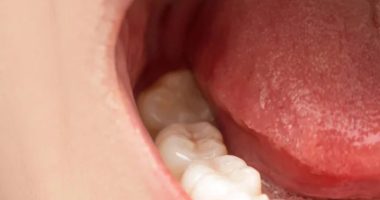Aerobic exercise shows great promise as a non-invasive and effective tool against non-alcoholic fatty liver disease (NAFLD). While it may not be a cure, it offers a range of benefits which will be discussed below so we go along. Now let’s understand what non-alcoholic fatty liver disease (NAFLD) means.
Non-alcoholic fatty liver disease (NAFLD) is a condition in which excess fat builds up in the liver, not caused by heavy alcohol use.
It is usually seen in people who are overweight or obese, but it has also been diagnosed in people without any of these risk factors, including young children.
Early-stage NAFLD does not usually cause any harm, but it can lead to serious liver damage, including cirrhosis, if it gets worse. Having high levels of fat in your liver is also associated with an increased risk of serious health problems such as diabetes, high blood pressure, and kidney disease.
Symptoms of NAFLD are usually not present in the early stages, and it is often diagnosed after a blood test called a liver function test produces an abnormal result or during an ultrasound scan of the abdomen.
Treatment for NAFLD includes weight loss, diet changes, and exercise, as well as managing any underlying health conditions[1, 2].
Aerobic exercise against non-alcoholic fatty liver disease: How effective is it?
Aerobic exercise is effective in reducing hepatic steatosis and the associated cardiovascular risk in patients with non-alcoholic fatty liver disease (NAFLD). Both aerobic and resistance training have been shown to reduce hepatic fat content. Recent guidelines emphasize the importance of exercise, but leave the choice of training to be determined by the patient.
A recent meta-analysis of 14 studies found that 150 minutes of moderate to intense aerobic activity per week can significantly reduce liver fat in patients with NAFLD. Exercise affects fatty liver disease through various pathways, including improved peripheral insulin resistance, reduced excess delivery of free fatty acids and glucose in the liver, and increased fatty acid oxidation. Therefore, exercise is an effective solution for NAFLD, and physicians can confidently prescribe exercise as a treatment for NAFLD.
In summary, engaging in aerobic exercise to fight non-alcoholic fatty liver disease, offers the following benefits:
- Reducing liver fat: Studies show that engaging in 150-240 minutes of moderate-intensity aerobic exercise per week can significantly reduce liver fat by 2-4%, and even achieve similar results with as little as 135 minutes weekly. This can prevent NAFLD progression and improve overall liver health.
- Improving metabolism: Aerobic exercise enhances insulin sensitivity, aiding in better blood sugar control and reducing excess fat storage in the liver. This helps address underlying metabolic issues contributing to NAFLD.
- Weight management: Aerobic exercise plays a crucial role in weight management, which is important for NAFLD since being overweight is a major risk factor. Even modest weight loss through exercise can improve liver function and overall health.
- Other benefits: Exercise can also improve your cardiovascular health, mood, and energy levels, all of which contribute to a better quality of life with NAFLD [3, 4, 5,].
What you can do
Intensity: While both moderate and vigorous exercise can be beneficial, moderate-intensity exercise is often recommended for beginners or those with limited mobility. You can choose activities like brisk walking, swimming, cycling, or dancing.
Type: Any type of aerobic exercise that you enjoy and can stick with consistently is effective. Combination: Studies suggest that combining aerobic exercise with a healthy diet can yield even better results in tackling NAFLD.
Symptoms of NAFLD
The symptoms of non-alcoholic fatty liver disease (NAFLD) are not usually present in the early stages, and it is often diagnosed during tests carried out for another reason. However, as the disease progresses, some people may experience the following symptoms:
- Dull or aching pain in the top right of the tummy (over the lower right side of the ribs).
- Extreme tiredness.
- Unexplained weight loss.
- Weakness.
- Yellowing of the skin and the whites of the eyes (jaundice).
- Itchy skin.
- Swelling in the legs, ankles, feet, or tummy (oedema).
- If cirrhosis (the most advanced stage) develops, more severe symptoms may occur, such as:
- Spiderlike blood vessels on the skin.
- Long-lasting itching.
It is essential to consult a healthcare professional if you experience any of these symptoms, as they may indicate a liver condition.
ALSO READ: Catching HIV/AIDS Through Kissing Can Only Happen Under These Conditions









